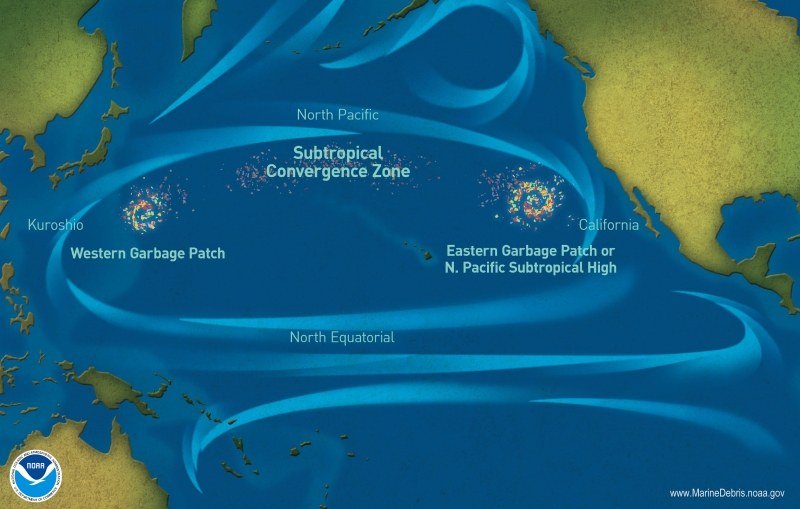By blog.marinedebris.noaa.gov.
 A thick, floating mass of marine debris is what most people picture when they think of the garbage patch. However, this is actually pretty inaccurate.
A thick, floating mass of marine debris is what most people picture when they think of the garbage patch. However, this is actually pretty inaccurate.Although this is what most people picture when they think of a “garbage patch,” that’s actually pretty inaccurate. Let’s set the record straight and get to the truth about garbage patches.
First off, garbage patches have been wildly misrepresented in the media in the past, causing confusion on the subject and leading many to believe that there is a large “island of trash” in the Pacific Ocean—at least the size of Texas!— that you can walk around on. This is extremely far from reality.
To start, when people talk about “the garbage patch,” they are usually referring to the Great Pacific Garbage Patch in the Pacific Ocean—one of many garbage patches located throughout our global ocean. These garbage patches are formed as a result of rotating ocean currents called “gyres,” which pull debris into their center, creating areas with higher concentrations of marine debris. Because currents like these are dynamic, the size of these concentrated areas is constantly changing, making it extremely difficult to estimate the size of garbage patches. To learn more about ocean currents and the way they move debris, check out our webpage on how debris accumulates.
Secondly, there is no “island of trash” and you definitely can’t walk on the garbage patch. In reality, garbage patches are made up of lots of types of debris. Although you may find larger debris items floating on the surface of the water such as plastic bottles or derelict fishing nets, the majority of debris found in garbage patches is microplastics.
read more at blog.marinedebris.noaa.gov.

